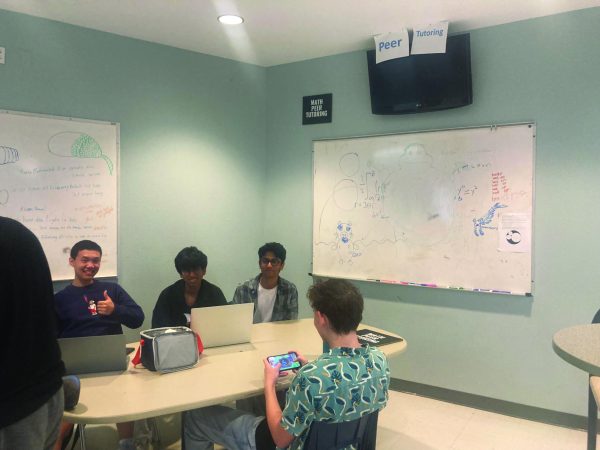IN-DEPTH: To Teach or Not to Teach: Faculty Forced to Resign Due to Mandatory Return
January 21, 2021
LASA graphic design and Ezine teacher Jill Giulietti started off this school year excited. But because teachers were directed to return to campus on Nov. 2 or face losing their jobs, that mood didn’t last forever.
“I started this year excited to be here, excited to be working with my students, and this kind of hit me out of left field,” Giulietti said. “I really don’t feel like I had any other choice but to resign.”
Giulietti is just one of multiple teachers all across the Austin Independent School District (AISD) who will have to resign this school year because of the district’s policies mandating that teachers who don’t have an accommodation return to campus Nov. 2. These accommodations do not include teachers who live with people who are at risk due to COVID-19. The Texas Education Agency (TEA) requires that all districts provide an in-person option, and AISD has committed to providing a virtual option for the remainder of the 2020-21 school year, according to AISD’s assistant director of public affairs and operations, Scott Thomas.
“Given that the situations on our campus can change daily and the need for restoring important in-person support for students, we are asking staff to work from the campus or district facility,” Thomas said. “Staff with approved accommodations will continue to teach or work remotely.”
According to KXAN, more than 900 of the nearly 1,200 teachers who asked for accomodations for the spring semester have had their requests denied, possibly putting teachers at risk. Ken Zarifis, the president of Education Austin, Austin’s largest teacher’s union, has concerns about the safety of students and staff returning to campus. Teachers returning to campus additionally means that they may be putting their students at risk.
“As teachers, in our code of ethics, we have committed to not knowingly bringing kids back into an unsafe environment,” Zarifis said. “The district is forcing us to break our code of ethics. How can we embrace that? It’s wrong.”
According to Thomas, AISD has taken these concerns into consideration. The district has implemented safety measures for all campuses.
“We’ve implemented procedures all across the board to protect students, to protect teachers, to protect staff,” Thomas said. “Including, obviously, masks across the board, the hand-washing and disinfection stations that I’m sure you’ve seen at your campus, all the signage that we have as well as the increased disinfection and sanitation procedures.”
Nevertheless, Zarifis said that safety has to be at the forefront of all decisions, even if that means having fewer people on campus. According to him, learning isn’t easy when people are at risk.
“Kids have to be safe. They have to be healthy. Teachers can’t be sick if they are going to teach,” Zarifis said. “You can’t learn if you are dead.”
However, according to LASA principal Stacia Crescenzi, even safety isn’t as easy as it might seem at first glance. Having fewer teachers on campus also gives rise to other problems which have been seen in many elementary schools.
“They’re having to put more students in one room, which is unsafe because they have so many teachers out on leave,” Crescenzi said, “so schools can’t prioritize health when this many teachers are on leave. And when you talk about health, physical health is absolutely important, but so is social-emotional health, and if kids can’t come back so they can’t interact with other children, they can’t interact with these nurturing adults in an educational setting that they need to because the teachers aren’t here, then you’re sacrificing their emotional health.”
Safety isn’t the only reason some teachers have decided to stay home. McCallum High School English and Literary Magazine teacher Daniel Myers decided to stay home because it’s what his community and the scientific community asks of him. Myers also has to take care of his children at home.
“I have a 4-year-old who needs me here to take care of her. When I’m [on campus], it means my wife is taking off the whole day until I get home to take care of our daughter, and then when I get home, she starts her 12-hour work day,” Myers said. “It’s just unmanageable.”
Because Myers does not have an approved accommodation from AISD, if he stays home, he will be forced to resign. After hearing of his situation, McCallum senior Olivia Navarro decided to make a Change.org petition that garnered over 17,000 signatures as well as media attention from the local press.
“When Mr. Myers told us that he was at risk of losing his job by the end of next week, I was in shock,” Navarro said. “He could actually be leaving us, and I just decided to make a petition to try to stop that from happening.”
After the petition, Myers found out that he has a condition that may grant him an accommodation, and is pursuing that route. LASA math teacher Ruchi Varma has been forced to take family medical leave because of a similar situation. If the situation continues, Varma will be forced to resign because she is currently taking care of her mother in Los Angeles and cannot physically return to campus. According to LASA junior Sohail Saffari, who is one of Varma’s students, she should be able to continue teaching virtually.
“No teacher should be forced to choose between their job and their family, especially because she’s proven that she can do her job while even online,” Saffari said.
Saffari also decided to make a Change.org petition for Varma in order to advocate for her job. The petition gained over 1,500 signatures and media attention from CBS Austin.
“TEA says, ‘We’re doing this for the students, we’re doing this for the students,’” Saffari said, “so if the students come out and say otherwise, then TEA loses their ground to stand on in this situation.”
Navarro also echoed similar sentiments. According to her, there are many people who want to see a change in AISD’s policies.
“There are a lot of students and parents of the community who backed this cause and want AISD to change its policy, and it’s not just a small number of people,” Navarro said. “We are not going to ignore that our teachers are at threat here.”
According to Zarifis, only about 25% of students have returned to campus, even though many teachers have returned in person. These numbers clearly show what families in AISD are thinking, according to Zarifis.
“That indicates a very clear message from the families in AISD that they are preferring the virtual option,” Zarifis said.
Myers would like to see AISD give campuses more flexibility in how they choose to return to school. According to him, teaching is a unique job that requires people to make split-second decisions.
“There are rules, but rules are deemed through the lens of people’s actual lives, and as a teacher, you bend rules every five seconds based on the life of the human you are dealing with,” Myers said. “I would like to see the school district seeing the teachers in the same light that teachers are seeing their students. We are human beings with complicated realites and maybe the rules need to be interpreted through the different realities because we’re dealing with human people.”
According to Thomas, the number of teacher resignations and retirements between March to October has changed from 570 in 2019 to 587 in 2020. According to him, there were also seven resignations and seven retirements this November, but those numbers do not include teachers who took family medical leave, which is what some teachers, like Varma, are opting for instead of resigning or retiring. Zarifis predicted that AISD may experience a rise in separations.
“What we anticipated happening is when people got to the point where you got to go back, it’s at that point they’re forced into a decision, ‘Am I going to stay or not?’” Zarifis said.
According to Crescenzi, there isn’t a simple solution to this problem. Every option seems to have trade-offs.
“There’s no good solution. If we let any teacher stay home, we’re sacrificing kids’ education,” Crescenzi said. “That’s a terrible position to be in. If I put kids’ education first, then I’m potentially sacrificing good teachers. I hate both of these options.”
Zarifis is hoping to work out a solution with AISD. He and Education Austin have been talking with AISD to roll out a pilot program that would allow principals more flexibility on how to deal with staffing on their campuses. The pilot will first roll out to Bowie High School, Ann Richards, Burnet Middle School, Cunningham Elementary and Padrón Elementary.
“We’re hoping that this pilot will help us understand what creative ways meet the student needs with the employee needs in keeping everybody as safe as possible as the overriding priority,” Zarifis said.
The pilot will have each school come up with a plan based on, among other metrics, how many students are coming in and how many teachers are willing or able to return to campus. The schools will then present their plans to AISD, and the district and those campuses will move forward from there. Zarifis hopes that this will increase the amount of flexibility on each campus.
“We’re not saying that this is going to be, ‘All of a sudden everybody is going to have the ability to not come to school if they don’t want to come to school,’ that’s not it,” Zarifis said. “It’s trying to find the greatest amount of flexibility as possible that we can find for every campus and for their workers on that campus.”
Zarifis pointed out that he doesn’t want to force campuses into this model and that schools who think the current plan is the best will be able to continue with that plan. According to Navarro, schools aren’t the only ones that need more flexibility.
“I think the TEA needs to realize that Texas is a very large state and that there are different districts that are in different levels of safety with COVID,” Navarro said, “and they need to be more accommodating with districts and not threaten with cutting funding because it strongholds districts to make decisions that are negatively affecting the students and teachers within the district.”
Giulietti also raised the possibility of more flexibility. According to her, that’s an important thing the district could offer to teachers.
“I’ve heard this from a lot of different teachers; the feeling is that we’re disposable,” Giulietti said, “and I think just a little bit of flexibility on their part would completely remove that assumption.”










